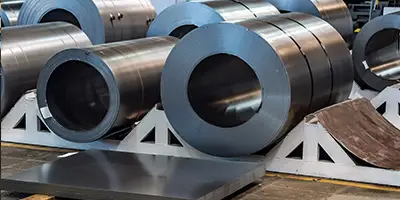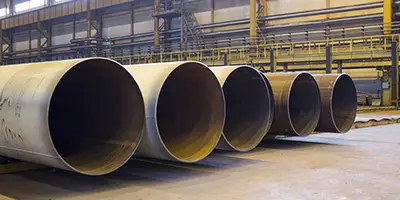Seamless steel pipes (SMLS pipes) are widely used in oil & gas, mechanical engineering, power generation, boiler systems, and structural applications. When engineers select a seamless pipe for a project, two parameters are always checked first: outer diameter (OD) and wall thickness. These two dimensions directly determine the pipe’s pressure rating, compatibility with fittings, and suitability for high-temperature or high-stress environments.
Seamless steel pipe wall thickness series. The American MSS and ASME standards define wall thickness by weight, classifying it into three types:
(1) Standard weight pipes are represented by std; (2) Thickened pipes are represented by xs; (3) Extra-thick pipes are represented by xxs. (4) For pipes ≤ DN 250mm, sch40 is equivalent to std pipe. For pipes ≤ DN 200mm, sch80 is equivalent to xs pipe.
What Is OD in SMLS Pipes?
OD (Outer Diameter) refers to the total outside width of the pipe measured across its surface.
It influences the type of fittings that will match the pipe.
It determines how the pipe will connect to flanges, couplings, valves, and other components.
OD is standardized under
ASTM, ASME, API, and various international specifications.
Common imperial sizes range from 1/8 inch to 48 inches, while metric sizes are also used in machinery and hydraulic systems.
What Is Wall Thickness?
Wall thickness is the distance between the pipe’s inner surface and outer surface. It is a critical factor in:
Internal pressure resistance
Structural strength
Weight per meter
Long-term performance in harsh environments
In most industrial standards, wall thickness is expressed using Schedule numbers such as Sch10, Sch20, Sch40, Sch80, Sch160, or as actual millimeter thickness in metric systems.
SMLS Pipe OD and Wall Thickness Chart (Common Sizes)
Below is a simplified reference chart commonly used for ASTM A106/A53/API 5L seamless pipes.

How to Use the OD & Wall Thickness Chart
When selecting an SMLS pipe, engineers usually follow this process:
1.Confirm the required OD
Based on the flow capacity or connection requirements.
2.Select the needed pressure rating
Higher pressure → choose a thicker wall (Sch80/Sch160).
3.Check compatibility with fittings and valves
OD determines matching flange sizes.
4.Balance cost and performance
Heavier wall = stronger, but also more expensive.
This is why a properly structured OD and wall thickness chart is essential in daily engineering work.






 English
English Español
Español بالعربية
بالعربية











 Phone :
Phone :  Whatsapp :
Whatsapp :  Email :
Email : 


